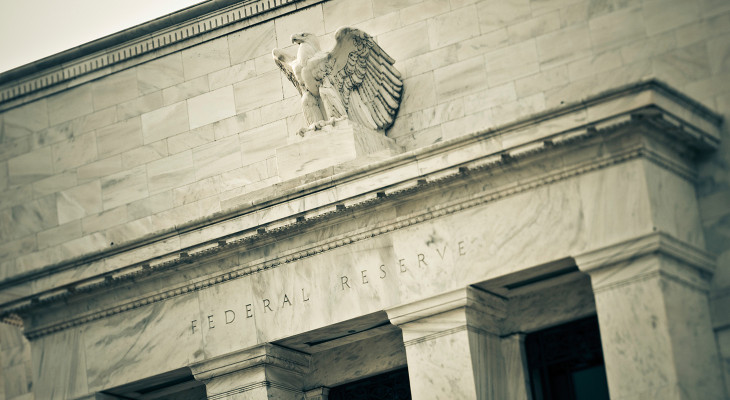
Is the Fed Losing its Relevancy?
Federal Reserve Meets, Leaves Rates Alone – Again
As the Federal Reserve’s third round of quantitative easing was drawing to an end in December 2014, the Federal Reserve conditioned market participants to think that, as the economy continued to improve per their projections, interest rates would rise gradually in the coming years. After all, the five year $4.2 trillion quantitative easing program was merely an emergency program that required the Federal Reserve to print trillions of dollars in order to buy US Treasury Bonds and Mortgage Backed securities for its own account and to set interest rates at zero.
When the emergency that lasted longer than expected passed, the Fed indicated that it would ‘normalize’ interest rates and begin to sell off the $4.2 trillion worth of assets it had acquired. Since the end of QE, the Fed has not sold any of the assets on its balance sheet, and while they have stopped buying assets, they continue to reinvest the interest on their portfolio on newly issued treasury securities. Since December 2014, the Federal Reserve has not gradually increased interest rates, rather they have managed just one 1/4% rate hike in December 2015.
Interest Rate Hikes, Barely
Last week the Fed held their July Federal Open Market Committee Meeting (FOMC) and concluded that no interest rate would be forthcoming. This was not a surprise if viewed from what market participants thought in the weeks leading up to the July FOMC meeting. However, if you had told, market participants in in September 2014, that rates would be 1/4% in July 2016, they would have had a hard time believing it. According to a CNBC survey of market participants in September 2014, the average market participant expectation was that the Fed would hike interest rates to about 1% by the end of 2015, with the average expectation that interest rates would hit 3.3% by the end of 2017. By the end of 2015, interest rates were at 1/4%, far from the average participants’ expectation of 1%.
Market participants are beginning to notice the disconnect between the Fed’s mid and long term expectations regarding the strength of the economy and interest rates and reality. The Fed’s ‘misses’ are difficult to notice and perhaps market participants are losing confidence in the Fed’s economic projections and their projected trajectory of interest rate increases.
GDP Growth, Barely
Earlier this year the Federal Reserve conditioned market participants to expect four interest rate hikes during 2016 based on projections of about 2.5% GDP growth during the year. In the spring, the Fed lowered expectations for interest rate hikes to two for 2016. To date, the Fed has raised interest rates just once, with two meetings left on the calendar, one in September and one in December. A recent survey of market participants, shows 20% believe a rate hike is forthcoming in September and 49% believe there will be at least one rate hike by December.
Last week, The U.S. Department of Commerce said that the U.S. economy grew at 1.2% in the second quarter and revised the first quarter GDP to 0.8%. Taking the average of the first two quarters GDP growth in the first half of 2016 was just 1%. Through July the Fed has raised interest rates just once.
The Fed’s beginning of the year projections for GDP growth and number of rate hikes are off by more than 50%. The Fed’s monetary policy has been unable to predict and/or generate the middling GDP growth it projected.
Impact of Fed Policy on the Dollar, Gold, Silver and the Stock Market
The Fed’s monetary policy has not been able to engender any meaningful GDP growth. The Fed has also been unable to deliver on the gradual rate hikes it indicated were forthcoming. As a result of these shortcomings, the Dollar Index remains down more than 2% in 2016, despite slowing global economic growth, negative interest rates at many central banks, European Central Bank, Bank of England and Bank of Japan stimulus programs and the Brexit vote in June that would normally have acted to boost the Dollar Index.
Despite being down significantly at the beginning of 2016 and in June after the Brexi vote, U.S. stock prices hit record levels in July even as profit growth slowed, largely in part of the seemingly permanent low interest rate environment that causes investors seeking a return to put money in the stock market.
Gold and silver have tacked on impressive gains in 2016 as the market begins to realize that the Fed’s interest rate hikes over the past two years have been far less numerous than expected. Further, the gold and silver markets have also learned to discount or ignore Federal Reserve officials’ talk of future rate hikes. Gold and silver do well in times of economic uncertainty and during times in which there is lack of confidence in government or monetary policy to create economic certainty. The Fed’s track record the past two years of projecting economic growth and following through on their interest rate hike projections have not inspired confidence in that institution.
